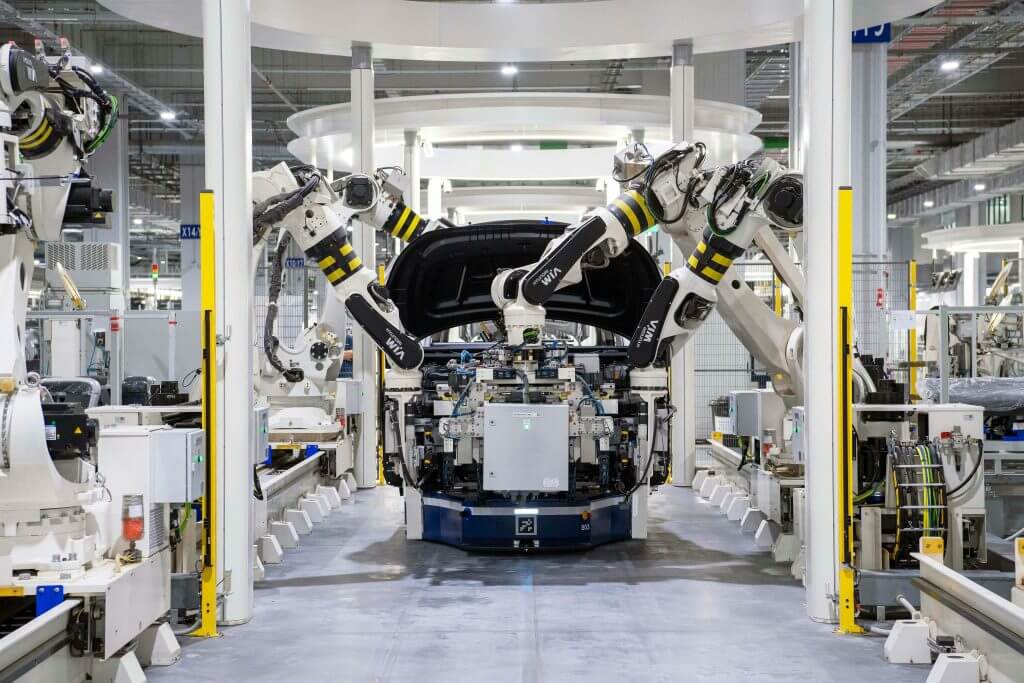4 Powerful Ways Automation Will Redefine Business Operations

Table of Contents
Introduction:
Automation is no longer just a buzzword—it’s a transformative force that is fundamentally reshaping industries around the globe. As we move into 2025, businesses across all sectors are discovering the far-reaching benefits of automation. It’s not just about increasing efficiency anymore; it’s about rethinking operations, enhancing customer experiences, and unlocking new opportunities that were once out of reach. For businesses ready to adopt automation, the potential for cost reduction, productivity improvement, and scalability is enormous.
In the coming years, automation will become the backbone of nearly every operational function, from AI-powered customer service that offers instant, personalized responses, to robotic process automation (RPA) in supply chains that will optimize logistics, reduce errors, and speed up fulfillment. The ability to leverage advanced technologies like artificial intelligence (AI), machine learning (ML), and data analytics will not only give businesses a competitive edge—it will redefine what’s possible in business operations.
By 2025, the businesses that have successfully integrated these technologies will be positioned at the forefront of innovation, leading their industries in growth and operational efficiency. But the question remains: how can companies harness automation not just to survive in this rapidly evolving landscape, but to thrive and become the leaders of tomorrow? This article will explore how automation is evolving, the key technologies driving change, and how businesses can prepare themselves to take full advantage of the automation revolution in the years ahead.
1. Artificial Intelligence: The Core of Business Automation

In 2025, Artificial Intelligence (AI) is the most powerful tool that businesses will have for automating complex tasks and improving decision-making. Once considered a futuristic technology, AI has become a core part of business operations across various industries, from automating basic customer service functions to carrying out complex data analysis and enhancing business strategies.
AI-powered tools like chatbots, predictive analytics, and platforms such as Zapier and Salesforce are transforming the way businesses operate. These tools help businesses handle routine tasks, optimize workflows, and enhance customer experiences automatically, which not only improves efficiency but also minimizes human error. The integration of AI into business processes is already proving to be a game-changer in both large corporations and small enterprises.
How AI Will Transform Business Operations:
- AI-Driven Chatbots and Customer Support:
AI-powered chatbots are revolutionizing customer service by providing 24/7 support. These chatbots can handle everything from answering frequently asked questions to resolving common customer issues in real-time. By automating customer service functions, businesses can deliver instant, efficient support, improving overall customer satisfaction and reducing the workload on human employees. - Predictive Analytics for Business Decisions:
One of the biggest advantages of AI is predictive analytics, which allows businesses to make data-driven decisions. Using AI algorithms, businesses can analyze historical data, forecast future trends, and optimize key functions like inventory management, marketing strategies, and customer segmentation. This ensures that businesses are always one step ahead, ready to adapt to changes in the market. - Machine Learning in Recruitment and HR:
Machine learning is another area where AI is having a profound impact. In HR and recruitment, AI can automate tasks such as screening resumes, evaluating candidate performance, and even creating personalized training programs for employees. By streamlining these functions, businesses save time and ensure that they are hiring the right candidates for the job. - AI in Content Creation and Marketing:
AI is also making strides in content creation and marketing. Machine learning algorithms are now capable of generating written content, creating personalized marketing messages, and even analyzing customer behavior to deliver highly targeted advertisements. This not only saves time for content creators but also ensures that marketing strategies are more effective and data-driven. - Supply Chain Optimization:
AI’s ability to analyze vast amounts of data and predict outcomes is also benefiting industries like logistics and supply chain management. AI-powered systems can optimize routes, reduce delivery times, and predict maintenance schedules, making supply chains more efficient, cost-effective, and reliable.
Benefits of AI-Driven Automation:
- Increased Efficiency: Automation reduces manual labor, freeing up employees to focus on higher-value tasks, which boosts overall productivity.
- Cost Reduction: AI can significantly lower operational costs by eliminating human error and improving accuracy in decision-making.
- Enhanced Customer Experience: With AI-powered systems offering faster response times and tailored services, customer satisfaction improves, leading to better loyalty and retention.
In summary, AI is not just a tool for automation—it’s a transformative force that will continue to reshape business operations. By leveraging AI, companies can gain a competitive edge, reduce costs, and create more personalized experiences for their customers.
Source:
- McKinsey on AI in Business
McKinsey & Company – How AI is Revolutionizing Business Operations
2. Robotic Process Automation (RPA): Revolutionizing Efficiency

Robotic Process Automation (RPA) is a transformative technology that’s enabling businesses to automate repetitive, time-consuming tasks, ultimately improving productivity and reducing costs. By using software robots to carry out tasks like data entry, invoice processing, and compliance reporting, businesses can dramatically reduce human error and increase efficiency.
RPA has already begun to make its mark across industries, and by 2025, it’s expected to be integrated into nearly every business sector. From finance to logistics, RPA is streamlining operations, allowing employees to focus on more strategic, value-added tasks instead of mundane routine work.
For instance, in the financial industry, RPA tools are already being used for automated reconciliation, fraud detection, and regulatory reporting. These tools significantly reduce the chances of errors, optimize workflows, and increase operational accuracy. By automating these processes, financial institutions not only reduce the need for manual intervention but also improve customer satisfaction by delivering faster and more accurate services.
How RPA Will Revolutionize Business Efficiency in 2025:
- Automating Routine Tasks:
RPA software robots excel at handling high-volume, low-complexity tasks such as updating customer records, generating invoices, and processing payments. By automating these tasks, businesses can improve speed and efficiency, and employees can focus on higher-level, more creative work. - Reducing Costs:
One of the key benefits of RPA is its ability to reduce operational costs. Manual work is time-consuming and costly, especially when it involves repetitive tasks. By replacing these tasks with RPA, businesses can save significant amounts on labor costs while improving the accuracy and consistency of their operations. - Enhancing Compliance and Consistency:
In industries where compliance with regulations is critical, such as finance and healthcare, RPA ensures that processes are carried out consistently and accurately. By automating regulatory compliance tasks, businesses can adhere to the latest industry standards and avoid the risk of non-compliance, which could result in costly penalties. - Improving Speed and Accuracy:
RPA systems can perform tasks much faster and more accurately than humans, minimizing human error and increasing output. Whether it’s handling customer service requests, processing financial transactions, or updating inventory systems, RPA ensures these tasks are done swiftly and correctly. - Increasing Employee Satisfaction:
By removing the burden of repetitive administrative tasks, RPA allows employees to focus on more meaningful work. This not only improves employee job satisfaction but also fosters innovation and productivity within the workplace.
Key Benefits of RPA:
- Increases Productivity: Automates high-volume tasks, allowing employees to focus on more valuable activities.
- Reduces Operational Costs: Lowers labor costs by replacing manual processes with automated systems.
- Improves Consistency and Compliance: Ensures standardized procedures and adherence to regulations across all processes.
Looking Ahead: RPA in 2025 and Beyond
By 2025, Robotic Process Automation will become an integral part of business operations across industries. As businesses increasingly turn to RPA, those that adopt this technology early will gain a significant competitive advantage, improving efficiency, reducing costs, and delivering better customer service.
Source:
3. The Role of Automation in Customer Experience

Today’s consumers expect immediate, personalized responses from businesses, which is why automation has become a cornerstone of customer service. With advances in AI and machine learning, businesses can now offer frictionless, real-time support that meets the increasing demands for quick and effective service. By 2025, AI-powered customer service agents will play a central role in delivering a seamless customer experience.
AI-driven customer service not only allows businesses to meet customers’ immediate needs but also anticipates and predicts future demands. From chatbots providing 24/7 assistance to automated systems processing orders and handling returns, AI is setting the standard for modern customer service.
How AI-Driven Customer Service Will Transform Customer Experience:
- 24/7 Availability
One of the most significant advantages of AI-powered automation is the ability to offer round-the-clock service. Customers can get answers to their questions at any time of day or night, regardless of time zones. This level of availability meets the growing expectation for instant gratification and ensures that no customer is left waiting. - Chatbots and Virtual Assistants
Chatbots and virtual assistants powered by AI can handle an increasing volume of customer inquiries. Whether it’s answering FAQs, processing simple orders, or helping customers track their purchases, AI-powered systems ensure that customers receive fast and accurate responses. These virtual assistants help businesses manage customer interactions efficiently, reducing wait times and enhancing the overall experience. - Personalized Marketing Campaigns
In addition to enhancing customer support, AI algorithms also enable businesses to create personalized marketing campaigns tailored to individual customer preferences. By analyzing past behavior, purchasing patterns, and browsing history, AI can suggest products, services, or content that are more likely to resonate with each customer. This personalized approach leads to higher engagement rates and conversion rates, ultimately boosting sales and customer satisfaction. - Predictive Customer Service
One of the most exciting aspects of AI in customer service is its ability to predict future needs. AI systems analyze vast amounts of customer data to identify patterns and anticipate what customers may need in the future. For example, an AI-driven system could predict when a customer’s subscription is about to expire and automatically offer a renewal discount or suggest a new product based on their preferences.
Key Benefits of AI-Driven Customer Service:
- Increased Efficiency: Automation allows businesses to handle high volumes of customer interactions with greater speed and accuracy.
- Enhanced Customer Satisfaction: By providing fast, consistent, and personalized support, AI-driven systems improve overall customer experience and retention.
- Cost Reduction: AI reduces the need for large customer service teams by automating routine tasks and inquiries, leading to lower operational costs.
- Scalability: AI systems can handle a growing number of inquiries as businesses scale, without sacrificing quality or speed of service.
Source:
- Forbes on AI in Customer Service
Forbes – The Future of AI in Customer Service
4. Automation for Small Businesses: Leveling the Playing Field

In 2025, even small businesses and solopreneurs will have access to automation tools that were once reserved for large corporations. From automating invoicing and inventory management to customer engagement, automation will empower small businesses to operate efficiently and competitively, even with limited resources.
Small businesses often face the challenge of managing multiple tasks with a small team. The ability to automate processes that are otherwise time-consuming and resource-heavy will allow these businesses to scale operations and provide high-quality services without needing to hire additional employees or invest in complex technology infrastructure.
As automation tools become more accessible, even businesses with limited technical expertise can automate their workflows, increase efficiency, and focus on what matters most—growth and innovation.
How Automation Tools Are Empowering Small Businesses in 2025:
- No-Code Platforms and Tools for Small Businesses
No-code platforms enable non-technical users to automate processes and manage tasks without requiring deep coding knowledge. These tools are essential for small businesses looking to streamline operations without the need for dedicated IT teams. - Zapier: Automating Routine Tasks
Zapier allows small businesses to automate repetitive tasks by connecting apps like Gmail, Slack, and Trello. With Zapier, businesses can automatically move data between apps, set up notifications, and trigger specific actions based on user input. For example, a small business could automatically add new customers to an email list, send invoices, or schedule follow-up emails—all without manual intervention. How it benefits small businesses: Zapier simplifies automation, helping businesses save time on manual tasks, allowing them to focus on more strategic areas. - HubSpot: Automating Sales, Marketing, and Customer Service
HubSpot is a comprehensive automation platform that helps small businesses manage their sales, marketing, and customer service operations. With HubSpot, businesses can automate lead generation, track customer interactions, and nurture relationships with personalized email campaigns. The platform also offers tools to automate social media posting, follow-up emails, and customer support ticketing systems. How it benefits small businesses: HubSpot makes automation accessible to small businesses, enabling them to compete with larger companies in managing customer relationships and marketing efforts. - Airtable: Automating Data Management
Airtable is a flexible, no-code platform that combines the functionality of a spreadsheet with the power of a database. Small businesses can use Airtable to automate data entry, create custom workflows, and manage inventory, projects, or client information. With Airtable, businesses can integrate with other apps like Google Sheets, Slack, and Dropbox to create automated workflows that save time and improve organization. How it benefits small businesses: Airtable provides a user-friendly way to organize and manage data while automating repetitive tasks, freeing up time for more strategic work.
Key Benefits of Automation for Small Businesses:
- Streamlined Operations: Automation reduces the time spent on manual tasks, allowing small businesses to focus on high-value activities.
- Cost Savings: By automating routine tasks, small businesses can reduce the need for additional staff and lower operational costs.
- Enhanced Customer Experience: Automation improves response times, personalizes interactions, and ensures a consistent level of service.
- Scalability: Small businesses can scale without the need to invest in complex technology infrastructure or hire a large team.
Source:
- Entrepreneur on Small Business Automation
Entrepreneur – How Automation Can Help Small Businesses Compete
Conclusion:
The future of business is undoubtedly centered around automation. As we move into 2025, how technology will redefine business operations is clearer than ever. Artificial Intelligence (AI), robotic process automation (RPA), and predictive analytics are not just buzzwords—they are revolutionizing the way businesses operate, engage with customers, and gain a competitive edge. Companies that integrate these technologies today will be the leaders of tomorrow, driving efficiency, reducing costs, and delivering exceptional value to their customers.
The power of automation lies in its ability to streamline processes, reduce human error, and unlock new opportunities for innovation. From AI-driven customer service to RPA in supply chain management, automation is the key to future-proofing business operations and staying ahead of the curve in an increasingly digital world. As technology evolves, those who embrace automation will be able to adapt quickly, scale efficiently, and ultimately thrive in the competitive business landscape of 2025 and beyond.
If you’re interested in exploring more about how technology is shaping the future, I invite you to check out some of our other posts, including:
- Top 5 AI Innovations in 2025, where we explore the latest breakthroughs in AI and how they will impact industries.
- How 5G Will Transform and Disrupt Industries in 2025, to understand how 5G technology will revolutionize communication, business operations, and global connectivity.
By staying informed and adapting to new technologies, your business can not only survive but thrive in an automated world. Embrace the future of automation, and watch your business operations transform into a more efficient, scalable, and innovative powerhouse.





